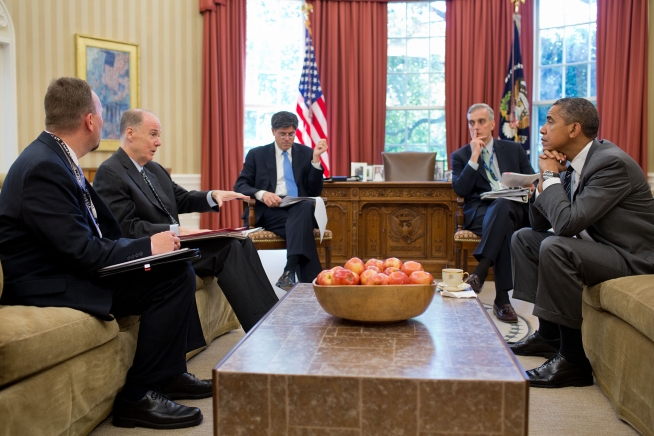With President Obama winning reelection and the conflict in Syria remaining the stalemate that it is, the administration is reportedly re-examining its options for involvement in the bloody war.
 But all of the elements that made the Obama administration express reluctance to engage in direct military action in Syria, or to directly send heavy armaments to Syrian rebels, continue to prevail.
But all of the elements that made the Obama administration express reluctance to engage in direct military action in Syria, or to directly send heavy armaments to Syrian rebels, continue to prevail.
The administration and the US military leadership explicitly denounced the viability of direct military action in Syria, going back many months before the election. Aside from the public’s aversion to another land war in the Middle East, officials openly admitted military action would worsen the situation.
The sectarian nature of the conflict in Syria brings back very fresh memories of the power vacuum and subsequent descent into chaos that broke out in Iraq. Furthermore, the opposition has elements of extremism and even al-Qaeda in it, and there’s no viable organized opposition for anyone to support.
Half measures like imposing a no-fly zone would also worsen the situation, given Assad’s considerable anti-aircraft capabilities, which are located in urban areas, putting more civilians at risk if the US were to try to take them out. This is also likely to expand the conflict outside Syria’s borders, something even war planners aren’t willing to risk.
The other option most often proposed by advocates of increased involvement is arming the Syrian rebels. So far, the administration has claimed it only provides non-lethal aid, while facilitating the delivery of some light weapons from allies like Turkey, Saudi Arabia, and Qatar.
All along, they claimed they had a proper vetting process which allowed them to pick and choose which of Syria’s disparate, unorganized rebel groups would receive the assistance, and avoid the thousands of jihadist fighters, many of whom are fighting under the banner of al-Qaeda. But this was a farce.
In October, the New York Times published an article confirming that “Most of the arms shipped at the behest of Saudi Arabia and Qatar to supply Syrian rebel groups fighting the government of Bashar al-Assad are going to hard-line Islamic jihadists.”
The irony of all this was pointed out boldly by renowned Middle East journalist Robert Fisk not long ago. “President Barack Obama and his Secretary of State, Hillary Clinton, say they want a democracy in Syria,” Fisk wrote. “But Qatar is an autocracy and Saudi Arabia is among the most pernicious of caliphate-kingly-dictatorships in the Arab world.”
“Rulers of both states inherit power from their families – just as Bashar has done – and Saudi Arabia is an ally of the Salafist-Wahabi rebels in Syria, just as it was the most fervent supporter of the medieval Taliban during Afghanistan’s dark ages,” he added.
Washington has long had its sights on regime change in Syria. But greater involvement at this time is patently unworkable, in addition to being without legal justification.
The Obama administration has used UN Security Council vetoes from Russia and China as an excuse to stay out of Syria militarily. But if Washington wanted to intervene, if they thought war was a viable option, they would have disregarded the Security Council from the beginning.
Whatever re-examining is going on regarding Syria policy, the administration ought to be thinking about stopping the limited intervention it is already engaging in. Support for the rebels has legitimized them, helping to fuel continuing violence and fortify the stalemate.


